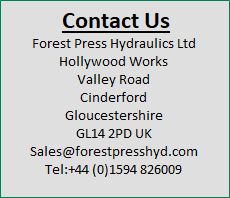Filling:
In the first operation, the wet mix is poured into the mould.
Pressing:
The press consolidates the concrete & pressure is applied to the mix. Vacuum and gravity remove water from the mix..
Removal:
The former and product are ejected from the mould.
Handling:
The handling system stacks finished products onto the pallet.
In the first operation, the wet mix is poured into the mould.
Pressing:
The press consolidates the concrete & pressure is applied to the mix. Vacuum and gravity remove water from the mix..
Removal:
The former and product are ejected from the mould.
Handling:
The handling system stacks finished products onto the pallet.
Basics Of Pressing
The Process
The hydraulic pressing process consists basically of filling a mould with a wet mix concrete with an aggregate/cement ratio of between 5:1 & 7:1. Then applying pressure in the order of 100psi (6.9MN/m2), excess water is then expelled and compaction is complete.
The aggregates and cement are accurately batch-weighed and dispensed into a mixer. Water is added to this mix until a slurry is formed with an approximate water/solid ratio of 1:1. Unlike conventional precasting, the quantity of water is not critical since free water is forced out during pressing. Careful selection of aggregates is required to achieve quality products and best production rates. (The aggregates must be pre-washed and free from contamination)
The dust or ‘fines’ are used to obtain a close-texture and smooth surface on the finished product. To prevent the escape of ‘fines’ as the water is drawn off by the pressure, a sheet of porous paper or filter cloth is placed or fixed to the bottom of the mould former.
A measured amount of wet mix is then dispensed into the mould. The mix easily runs and fills the mould without any need for vibration, and a second paper or filter cloth is attached to the die head.
The press is then actuated and the hydraulic ram presses down into the mould squeezing out the excess water. The drainage of this excess water is an important part of the process, and as the 400 ton presses the product, this is assisted by a vacuumed top drainage system. The duration of the pressing ranges from 10 seconds to 30 seconds depending on the aggregates quality/grading and characteristics.
Immediately after pressing, the product is strong enough to be handled and is removed from the press. It is then stacked near the machine within a dry atmosphere of the building for overnight curing. (In some hotter countries while curing is taking place the kerbs are ‘watered’ to ensure curing does not happen to quickly) The products are then stacked out into the stacking area for normal completion of curing. This process can be accelerated by use of steam curing.
The aggregates and cement are accurately batch-weighed and dispensed into a mixer. Water is added to this mix until a slurry is formed with an approximate water/solid ratio of 1:1. Unlike conventional precasting, the quantity of water is not critical since free water is forced out during pressing. Careful selection of aggregates is required to achieve quality products and best production rates. (The aggregates must be pre-washed and free from contamination)
The dust or ‘fines’ are used to obtain a close-texture and smooth surface on the finished product. To prevent the escape of ‘fines’ as the water is drawn off by the pressure, a sheet of porous paper or filter cloth is placed or fixed to the bottom of the mould former.
A measured amount of wet mix is then dispensed into the mould. The mix easily runs and fills the mould without any need for vibration, and a second paper or filter cloth is attached to the die head.
The press is then actuated and the hydraulic ram presses down into the mould squeezing out the excess water. The drainage of this excess water is an important part of the process, and as the 400 ton presses the product, this is assisted by a vacuumed top drainage system. The duration of the pressing ranges from 10 seconds to 30 seconds depending on the aggregates quality/grading and characteristics.
Immediately after pressing, the product is strong enough to be handled and is removed from the press. It is then stacked near the machine within a dry atmosphere of the building for overnight curing. (In some hotter countries while curing is taking place the kerbs are ‘watered’ to ensure curing does not happen to quickly) The products are then stacked out into the stacking area for normal completion of curing. This process can be accelerated by use of steam curing.
Production Requirements
The majority of products produced on the press are paving and kerbstones, although other products such as sectional garage panels and counterbalance weights have also been produced.
A typical factory producing these products would be situated near to an aggregate supply and the factory (depending on the shift pattern worked) would need to be large enough to handle the production made, and stock needed to be kept.
A typical factory producing these products would be situated near to an aggregate supply and the factory (depending on the shift pattern worked) would need to be large enough to handle the production made, and stock needed to be kept.








